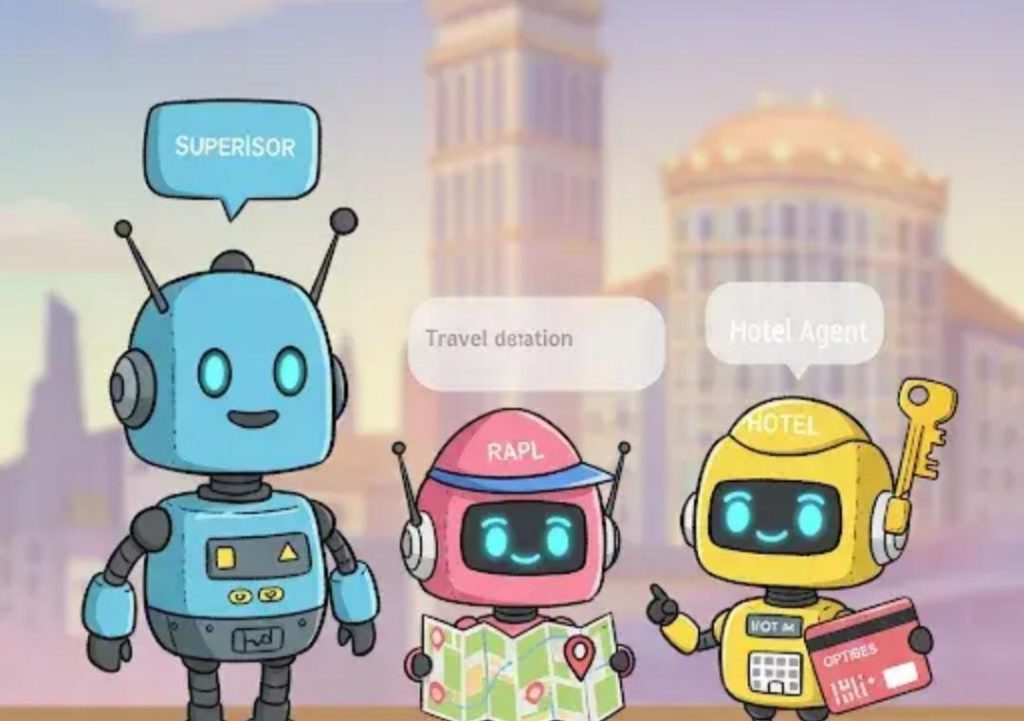
Multi-agent collaboration mimics real team dynamics
In the world of artificial intelligence (AI), researchers and developers have long explored the potential of individual AI agents to perform tasks autonomously. However, recent advancements have shifted the focus towards a more collaborative approach: multi-agent collaboration. By deploying a team of AI agents, organizations can harness the power of specialized skills, effective communication, and efficient task allocation. In this blog post, we’ll delve into the benefits of multi-agent collaboration and why it’s essential for building robust digital workflows that mirror human teamwork.
The limitations of single-agent AI
Single-agent AI systems, also known as autonomous agents, are designed to perform specific tasks without human intervention. While they have made significant progress in recent years, they still face limitations when it comes to complex tasks that require diverse skills, adaptability, and creativity. For instance:
- Limited domain knowledge: Single-agent AI systems are typically designed to operate within a specific domain or task. They lack the flexibility to adapt to new situations or tasks outside their predefined scope.
- Lack of creativity: Autonomous agents often rely on pre-programmed rules and algorithms, which can lead to predictable and limited output.
- Limited scalability: As tasks become more complex or voluminous, single-agent AI systems can struggle to keep up, leading to decreased performance and accuracy.
The advantages of multi-agent collaboration
In contrast, multi-agent collaboration allows different agents to specialize in various tasks, communicate effectively, and adapt to changing circumstances. This modular setup enables the creation of digital workflows that mirror human teamwork, but at machine speed and scale. The benefits of multi-agent collaboration include:
- Specialization and scalability: By dividing tasks among multiple agents, each agent can focus on its strengths, increasing efficiency and accuracy. As tasks grow in complexity or volume, additional agents can be added to the team, ensuring scalability.
- Diverse problem-solving: A team of agents brings diverse perspectives, skills, and knowledge, allowing for more effective problem-solving and decision-making.
- Improved communication and coordination: Agents can communicate effectively through shared knowledge and context, enabling seamless coordination and adaptability.
- Enhanced creativity: Multi-agent collaboration fosters a synergistic effect, where agents can build upon each other’s ideas and expertise, leading to more innovative and creative solutions.
Real-world applications of multi-agent collaboration
The benefits of multi-agent collaboration are not limited to theoretical discussions. Real-world applications are already emerging across various industries, including:
- Research and development: Multi-agent collaboration can facilitate collaborative research, where agents can gather and analyze data, identify patterns, and draw conclusions.
- Validation and testing: Agents can work together to validate and test complex systems, ensuring accuracy and reliability.
- Reporting and visualization: Agents can generate reports and visualizations, providing insights and recommendations to stakeholders.
- Customer service and support: Multi-agent teams can handle customer inquiries, providing personalized assistance and resolving issues efficiently.
Building AI agents for multi-agent collaboration
To build AI agents that can collaborate effectively, organizations should focus on the following key aspects:
- Agent design: Design agents with clear roles, responsibilities, and communication protocols to ensure seamless collaboration.
- Knowledge sharing: Implement knowledge sharing mechanisms to facilitate information exchange among agents.
- Task allocation: Develop algorithms for task allocation, ensuring that each agent is assigned tasks that play to its strengths.
- Feedback and adaptation: Implement feedback mechanisms to allow agents to learn from each other and adapt to changing circumstances.
Conclusion
In conclusion, multi-agent collaboration offers a powerful approach to building digital workflows that mirror human teamwork. By deploying a team of AI agents, organizations can harness the power of specialization, communication, and collaboration, leading to improved efficiency, accuracy, and creativity. As the field of AI continues to evolve, the potential applications of multi-agent collaboration will only continue to grow, revolutionizing the way we approach complex tasks and challenges.






